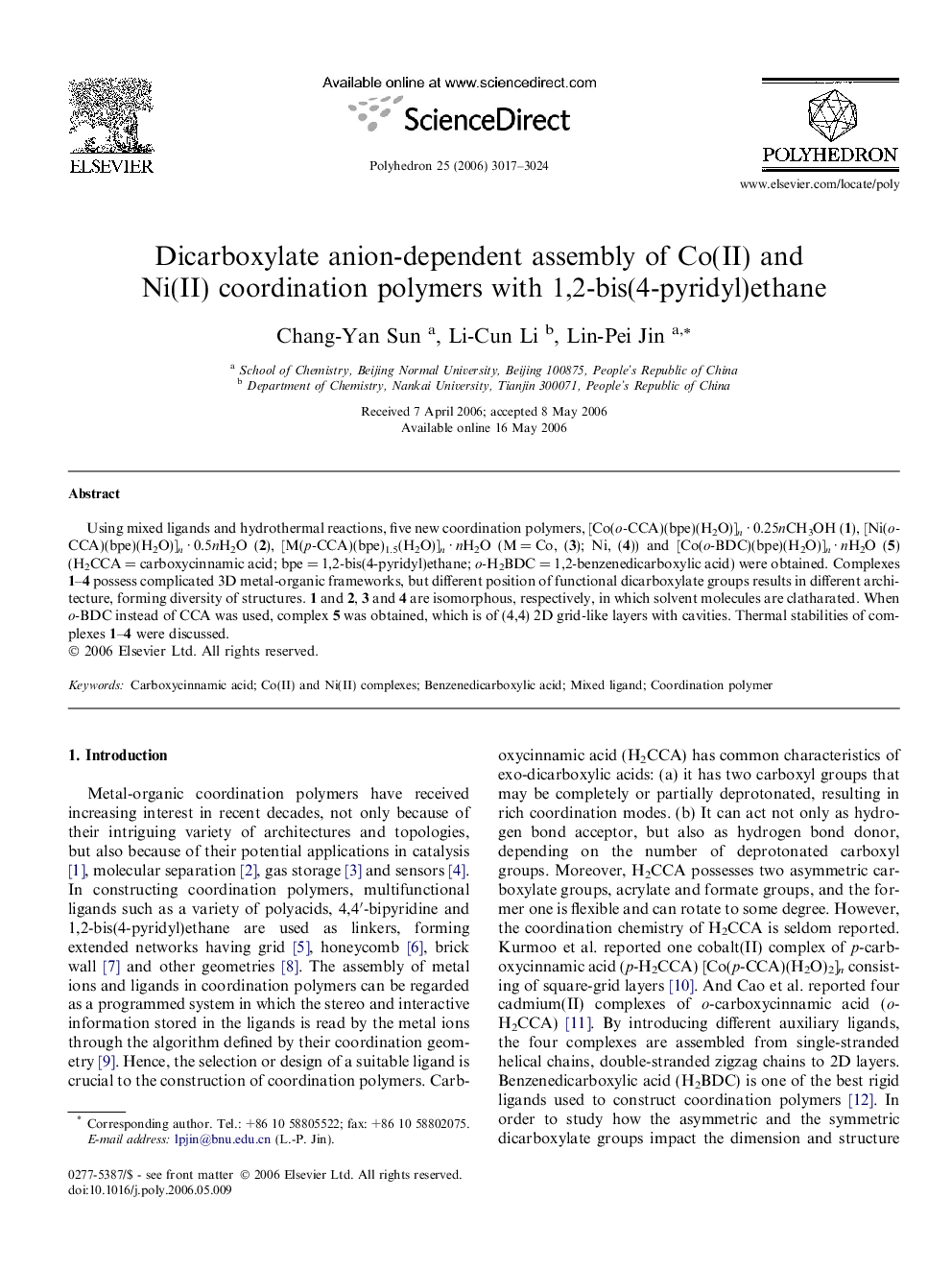| Article ID | Journal | Published Year | Pages | File Type |
|---|---|---|---|---|
| 1335649 | Polyhedron | 2006 | 8 Pages |
Using mixed ligands and hydrothermal reactions, five new coordination polymers, [Co(o-CCA)(bpe)(H2O)]n · 0.25nCH3OH (1), [Ni(o-CCA)(bpe)(H2O)]n · 0.5nH2O (2), [M(p-CCA)(bpe)1.5(H2O)]n · nH2O (M = Co, (3); Ni, (4)) and [Co(o-BDC)(bpe)(H2O)]n · nH2O (5) (H2CCA = carboxycinnamic acid; bpe = 1,2-bis(4-pyridyl)ethane; o-H2BDC = 1,2-benzenedicarboxylic acid) were obtained. Complexes 1–4 possess complicated 3D metal-organic frameworks, but different position of functional dicarboxylate groups results in different architecture, forming diversity of structures. 1 and 2, 3 and 4 are isomorphous, respectively, in which solvent molecules are clatharated. When o-BDC instead of CCA was used, complex 5 was obtained, which is of (4,4) 2D grid-like layers with cavities. Thermal stabilities of complexes 1–4 were discussed.
Graphical abstractUsing mixed ligands, five new coordination polymers were obtained. Complexes 1–4 possess different complicated 3D metal-organic frameworks, while complex 5 is of (4,4) 2D grid-like layers. These results show that the position of carboxylate groups greatly affects the structure of the complexes.Figure optionsDownload full-size imageDownload as PowerPoint slide
